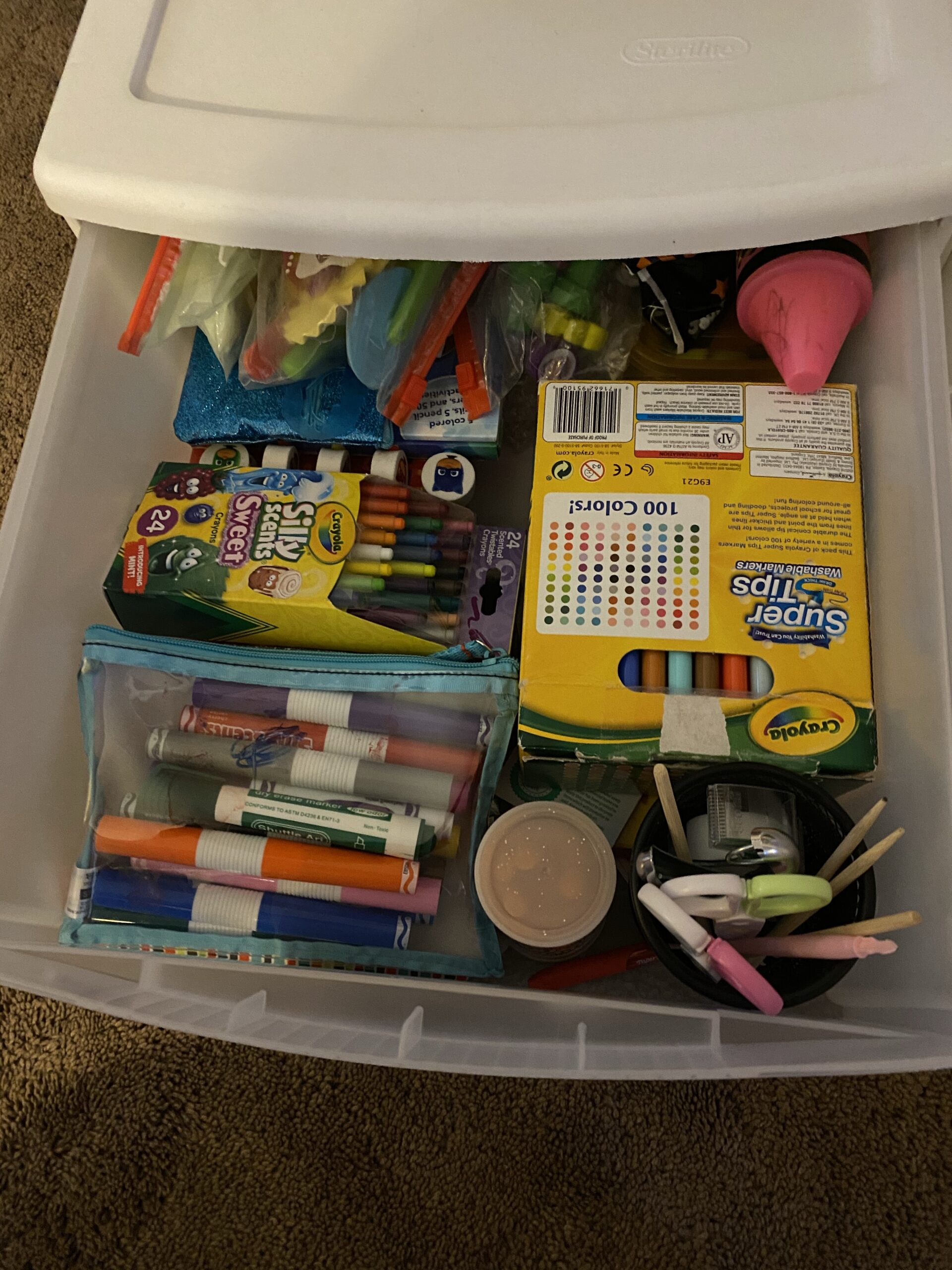One of my goals for the year is to reorganize my home. One source of constant clutter is all the toys. Well, it’s not even just the toys. It’s the books, games and art supplies too. If you have kids, you know what I’m talking about. Kid’s stuff can take over the entire house if you let it. I thought I was organized until I had Rosebud, but now Istruggle to keep up, but we now have a system in place for toy organization. Here are five simple ways to organize your kids toys.
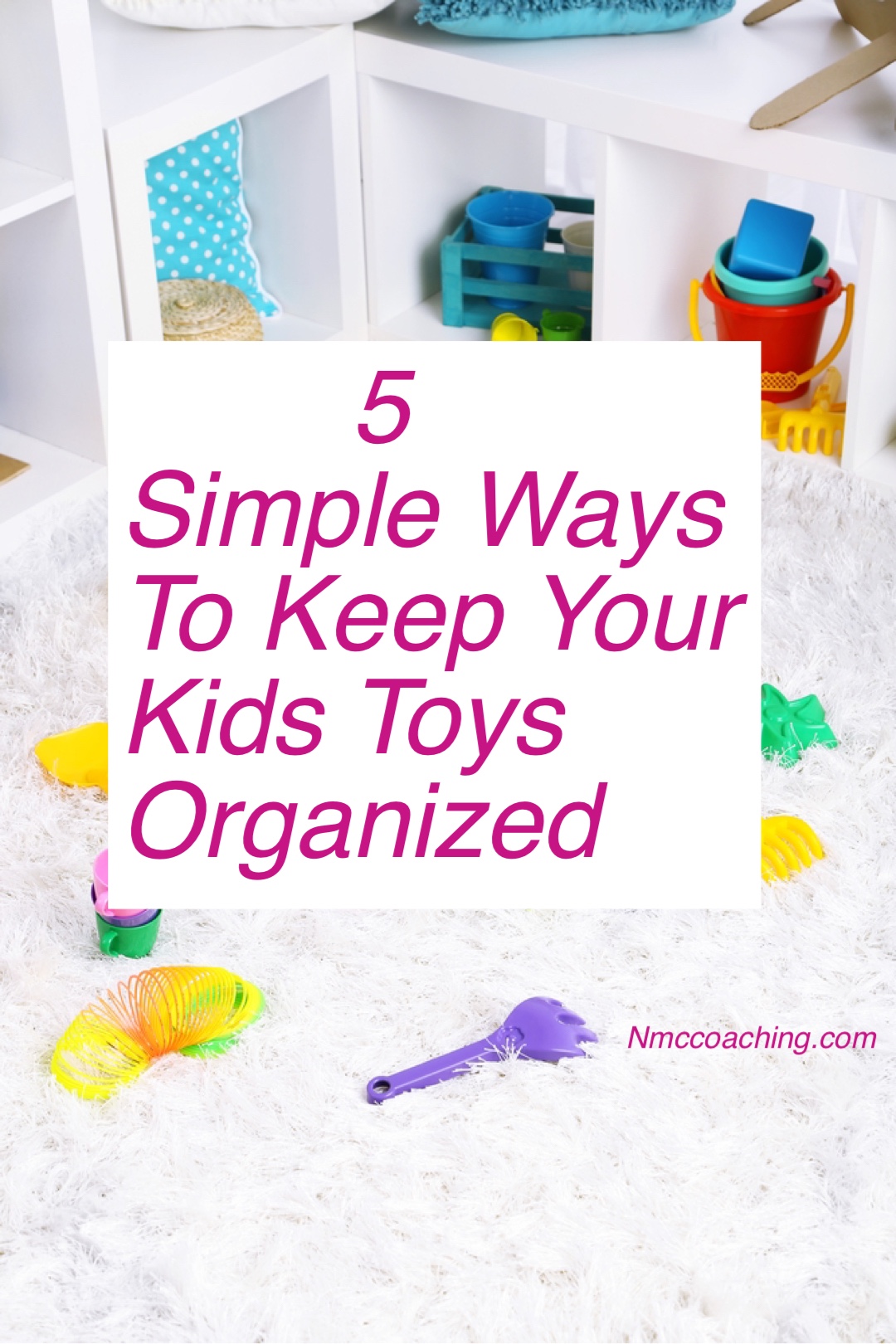
1 Keep Toys Visible
If you keep toys visible, you have more of an incentive to keep them organize. If you shove them in a box or closet somewhere, no one actually sees them. That’s wonderful if you are quickly trying to hide clutter from house guests, but then you and your kids can’t find what you are looking for. You know, the puzzle pieces that disappear or those doll clothes your daughter has been looking for all week. Yes, that happens here. This is the quickest way for toys to get lost. Especially if they are tiny toys.
There are several ways I keep Rosebud’s toys visible.
1. Use open baskets.
 Not only is this a great way to keep toys and supplies contained, but you can find baskets of any size, shape or color to go with any decor.
Not only is this a great way to keep toys and supplies contained, but you can find baskets of any size, shape or color to go with any decor.
2. Use clear plastic containers.
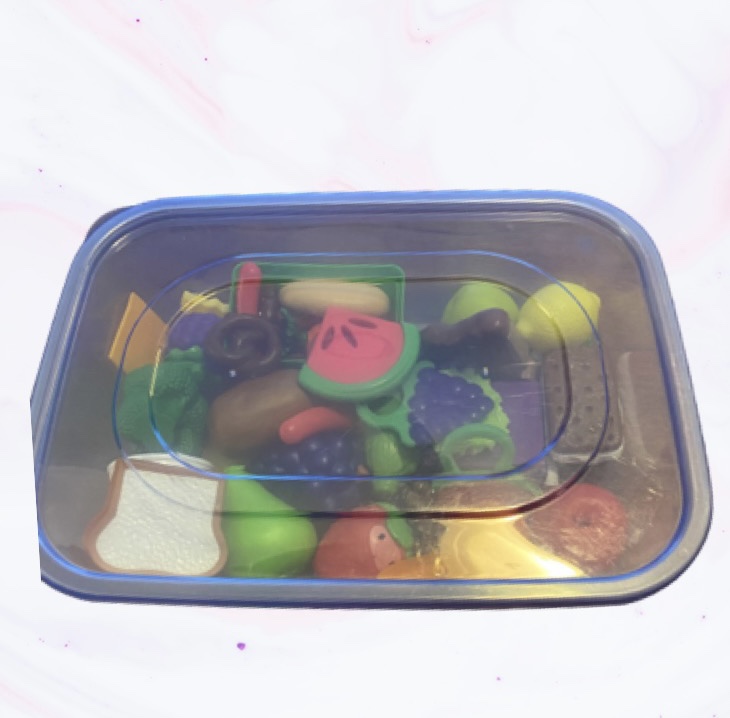
These are especially great for small items or if you are limited on space. We got some of these containers from the dollar store. I’ve had them a few years and most of the containers are still in good condition. They are great for stacking if you have limited space.
3. Use Labels
I don’t currently do this in my home, but this trick is great for open shelves if you want to divide them up. It’s also good for bins that you cannot see through. We do this in all the classrooms I work in and it’s a great way for the children to see how to organize. It’s also a great matching activity as they are matching the toy with the picture.
If your child reads, you can simply label the bins with words as well. If you’d like to print or create custom labels, here are some free
2 Make Toys Inviting
If you have toys out, most likely children will gravitate towards them, but presentation helps peak their interest. Some ideas for making toys inviting are
- Keep only a few toys on each shelf with space in between.
- If toys have multiple parts, put them on a tray, in a basket or box to keep pieces together.
- Change the set up from time to time. Sometimes just rerranging the toys can make them feel new.
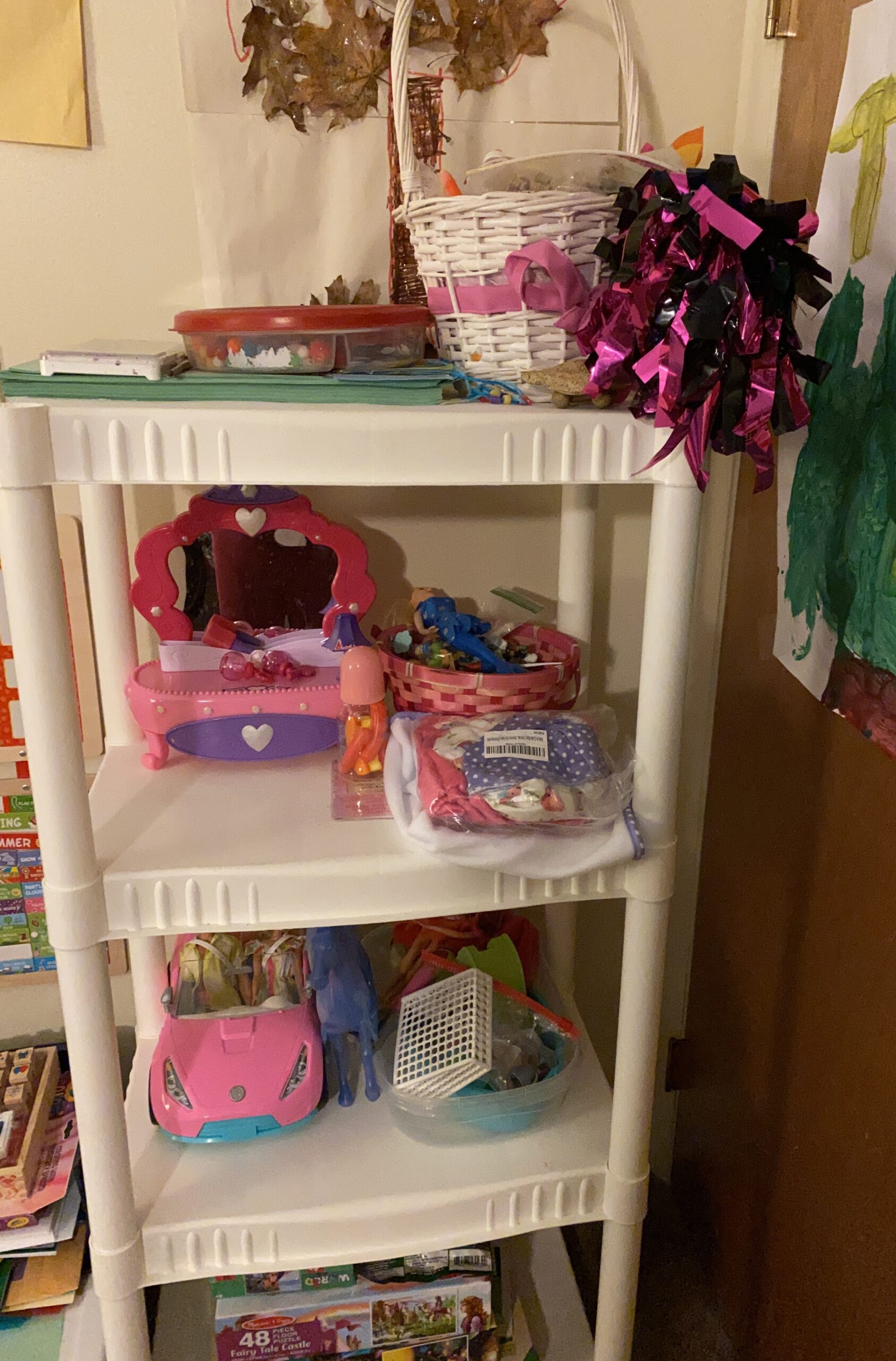
3 Organize toys by theme
This is how I like to organize toys. We have a science/sensory shelf, a shelf with games and books, a shelf for puzzles and shelves for doll props and dramatic play. This way makes the most sense to me and works best when it comes to toy rotation.

4 Toy rotation
Rotating toys is a great way to bring out older toys and to your kids, they will feel new all over again. How often you rotate toys depends on your childrens level of interest in the current toys, how much space you have and how much you plan a curriculum at home. Many homeschooling moms may rotate toys and other items depending on daily lessons or weekly themes. I’m not a homeschooling mom, so I don’t have a regular schedule for rotating toys. I change things up a bit when Rosebud loses interest or if I want to focus on a certain theme. For example, I brought out the Christmas and winter books in mid November. I will be bringing out the spring themed books soon as well as making play-dough and sensory bins related to spring. I also will bring out different themed coloring pages or arts and crafts ideas.

Speaking of arts and crafts, I use this wonderful container with dividers for collage materials.
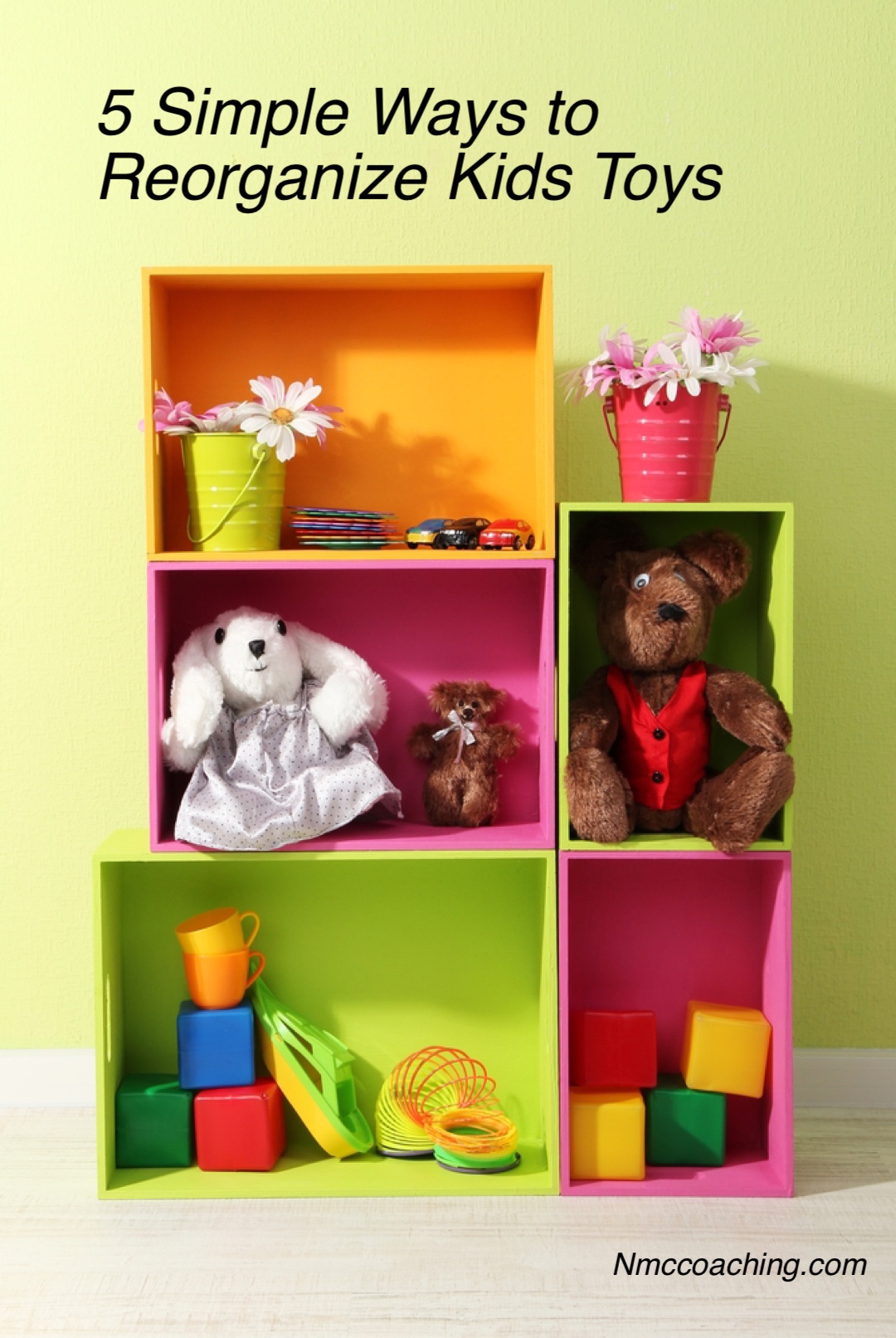
5 Get the kids involved in toy clean Up
This is the most important thing of all. Don’t be afraid to get your children to help clean up at a young age. Children as young as one-year-old can help you put things back into bins or put items on a shelf. This helps children feel a sense of ownership for their toys and other items. They will feel good accomplishing a task. Clean up is also a good lesson in tream work. If we work together, we can get things done faster. If we work together, we can keep our home clean and organized. If your children start cleaning up at a young age, they are more likely to help you keep their toys organized as they grow.
Rosebud will pitch in and help with clean up most of the time. There have been the natural consequences of losing toys because they were all thrown together and not put back where they would normally go. Overall, she has adapted to grouping things together and everything has its place.
What is the toy situation in your home? How do you organize toys? Tell me in the comments.

